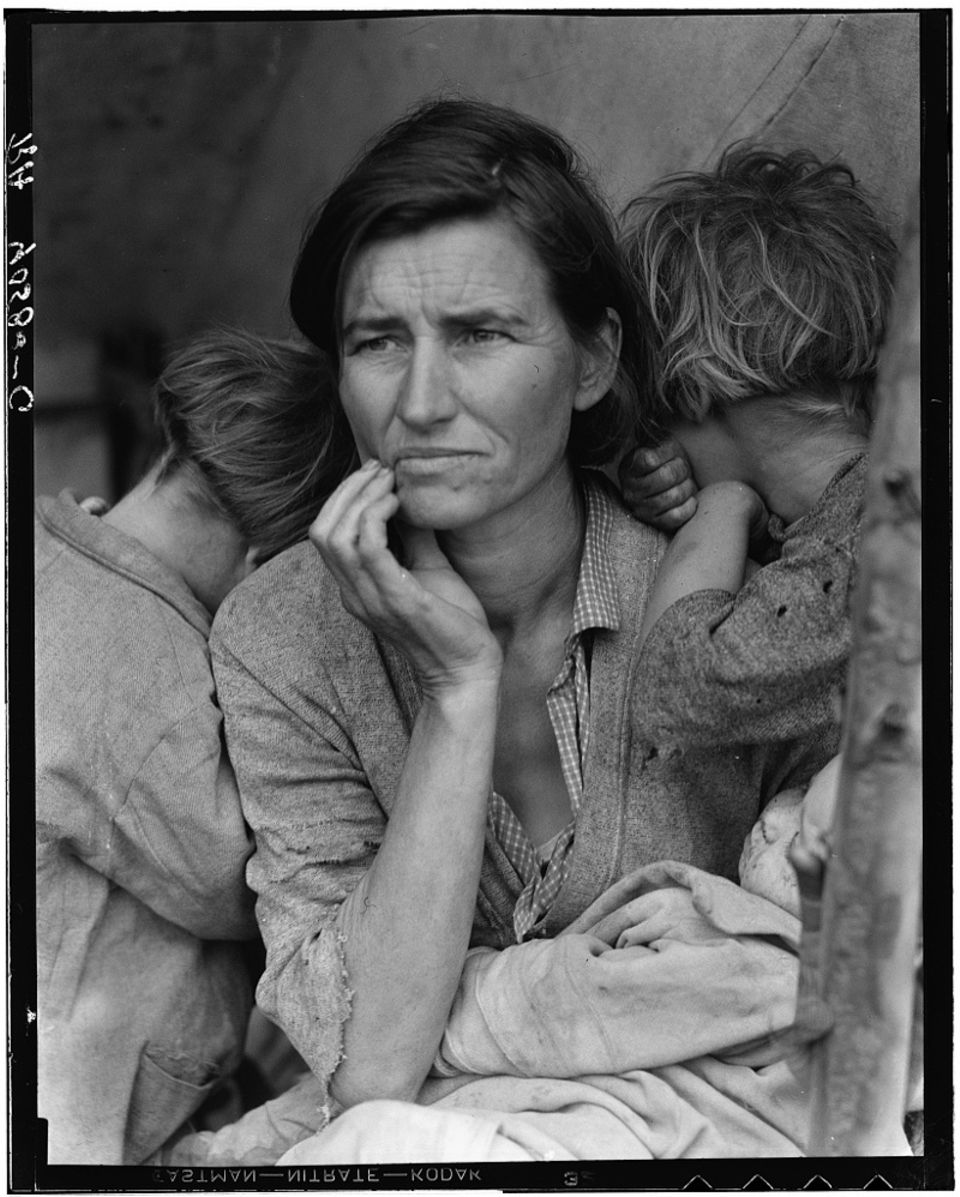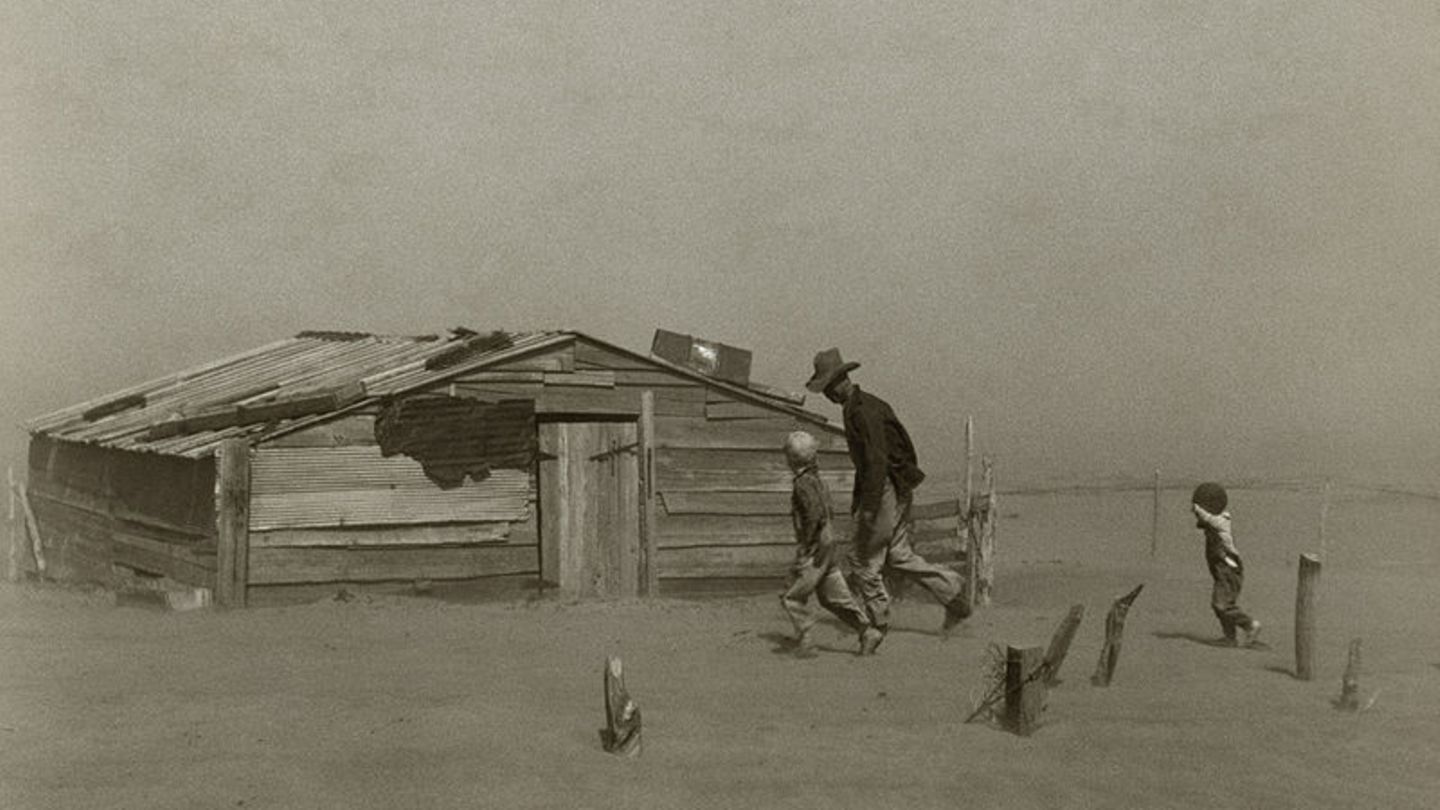On April 15, 1935, the sun disk in Mental Floss disappeared from the sky. It got so dark that you couldn’t see your hand in front of your eyes. Even in closed rooms you couldn’t see anyone in the room on “Black Sunday”. The storm front was 1000 miles long. It towered black into the sky, a wall of dirt rolled with it as high as a mountain. A dust that was recently fertile soil and has now been carried away. And with it the livelihood of thousands of farming families.
Man-made disaster
These dust storms, the Black Blizzards, are considered to be one of the greatest ecological catastrophes that humans have ever caused. Even if drought and natural storms contributed, those storms were essentially man-made. And that happened in little more than ten years. After World War I, the United States became a major grain exporter, filling the void left by Tsarist Russia.
Grain prices exploded. With agriculture, even little people could get money all at once. Even a small farm could make more money in the 1920s than the most famous baseball player of the day, Babe Ruth, made. A gold rush for grain began. The massive introduction of the tractor made it possible to plow under the endless prairies in the interior of the country and turn them into cornfields in just a few years. By the time the Great Plains were settled in the mid-19th century, the land was covered with prairie grass. It trapped moisture in the soil and covered most of the soil, the tough grass preventing the soil from being blown away during dry spells.
This phase of overexploitation and prosperity ended abruptly in 1929 when the stock exchanges collapsed on Black Friday. A global economic crisis set in and grain prices plummeted. By then the ground was already weakened. The prairie grass, the roots of which had fortified the ground for centuries, was eradicated. The soil was depleted and the natural vegetation had disappeared. And then in 1930 an eleven year drought began and with it the time of the “Black Blizzards”. In 1933, the Oklahoma City of Goodwill alone experienced 70 storms.
No protection from the dust
Animals warned people that they would be able to spot a coming storm more quickly. Farmers stretched wires to get back into the house in the absolute darkness of a storm. Few died directly in a storm. But the soil that once fed the farmers is now killing them and their families. The wooden houses at that time were porous and did not hold off the fine dust that the storm pressed against the walls at more than 100 km / h. The lungs filled with dust and fine crystals, and small children in particular died in agony from the pneumonia.
Floyd Coen told the History Channel how he lost his little sister. “She was a perfect little girl. I’m the only one of us brothers who can talk about her without breaking down.” Four of the Coen children, including Floyd, developed pneumonia, the girl was only two and a half years old. “At that time, four children died in our neighborhood.”
In addition to this disaster, there were other disasters caused by the collapsing ecosystem. The incredible heat and drought led to an invasion of insects, pests and poisonous spiders, who took refuge in the houses because there was still liquid there. Then there were waves of locusts and hares plagues. To contemporaries, it looked like the Apocalypse from the Old Testament.
The farmers fled into the next misery
The extreme drought parched the ground and turned the fertile soil into a fine black dust. Storms could form a wall more than 3000 meters high from the earth material. People could even tell the origin of the storms from the color of the dust. The once fertile arable land trickled down again somewhere over the seas. Seafarers noticed the dust on their decks in the middle of the Pacific. In two days a storm blew 350 million tons of soil to the east coast.
The Great Plains were left as a desert.

Black Sunday of 1935 led the government of President Franklin D. Roosevelt to implement new, soil-conserving cultivation methods as part of the New Deal program. But the Black Blizzards didn’t end until 1939, when the drought ended.
It was too late for many farmers and their families. The dust storms forced thousands of families from Texas, Arkansas, Oklahoma, Colorado, Kansas, and New Mexico to immigrate to California. In the middle of the global economic crisis, they lived in tent cities and found poorly paid work with difficulty. Dorothea Lange and other photographers recorded their misery on behalf of the government.
The country singer Woody Guthrie experienced the horror of the storms and the suffering of the farmers as a young man and processed the experience in his songs like “The great dust storm”:
“The storm started at sunset, it raged all night.
When we looked out the next morning, a terrible sight awaited us.
We saw outside our window where the wheat fields stood
now just a rippling sea of dust that the wind had blown here.
It devoured our fences, it devoured our barns.
It devoured our tractors – that wild and dusty storm.
We loaded our boxes and put our families on them.
We crashed down the highway never to come back. “
David William is a talented author who has made a name for himself in the world of writing. He is a professional author who writes on a wide range of topics, from general interest to opinion news. David is currently working as a writer at 24 hours worlds where he brings his unique perspective and in-depth research to his articles, making them both informative and engaging.




